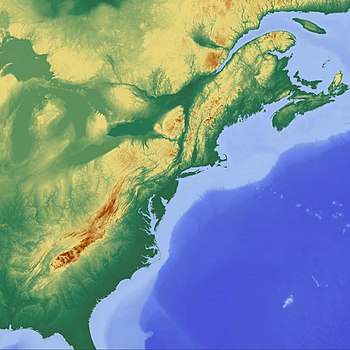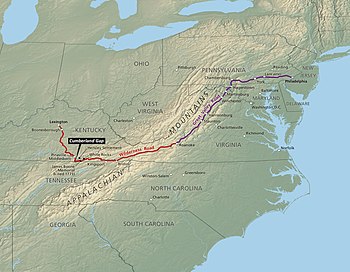Appalachian Mountains

The Appalachian Mountains are a chain of mountains found in North America extending for almost 2,000 miles (3,200 km) from the Canadian province of Newfoundland and Labrador to central Alabama in the United States. The chain runs parallel to the Atlantic Ocean, though inland by up to a hundred miles from the shore.
How the Appalachians compare to other huge mountain chains
The chain formed through the collision of continental plates, approximately 500 million years ago.
As an older chain than the Rocky Mountains, and the Himalayas, the Appalachian mountains are generally lower and not as imposing, but the rugged, steep, bunched-up formations, typically at around 5000', formed a barrier to European settlers hoping to move west in the early days of the United States. The highest peak in the chain is Mount Mitchell in North Carolina at 6,684 feet above sea level.
Only one way through for early European settlers
For European settlers trying to go west starting anywhere from North Carolina to New Jersey, there were two southwest-to-northeast mountain ridges that had to be crossed: the Cumberland Mountain ridge (more westerly) and the Pine Mountain ridge (more easterly). There were two gaps across Cumberland Mountain, at either Pennington Gap (Virginia) or, about 40 miles southward, Cumberland Gap. However, there is no easy way across the easterly Pine mountain ridge in the vicinity of Pennington Gap. Thus, Cumberland Gap became the only feasible way through for wagon trains, and in 1775, Daniel Boone led an expedition to blaze a trail across the Cumberland Gap.Cite error: Closing </ref> missing for <ref> tag
</references>
